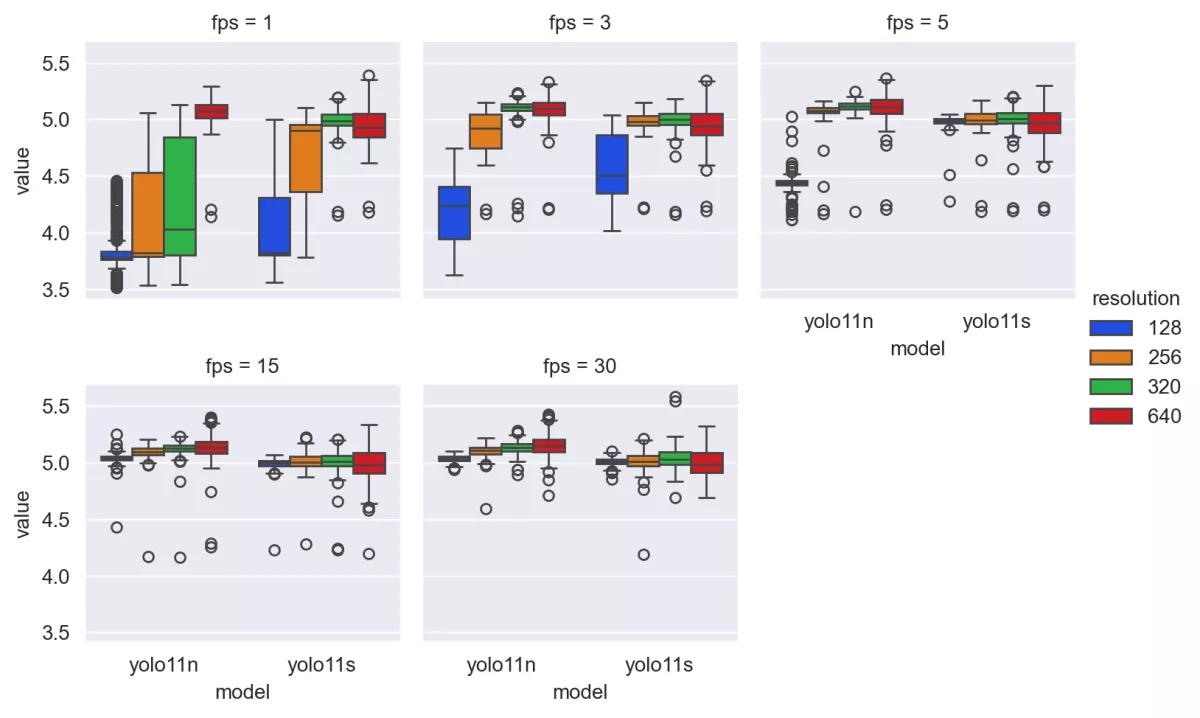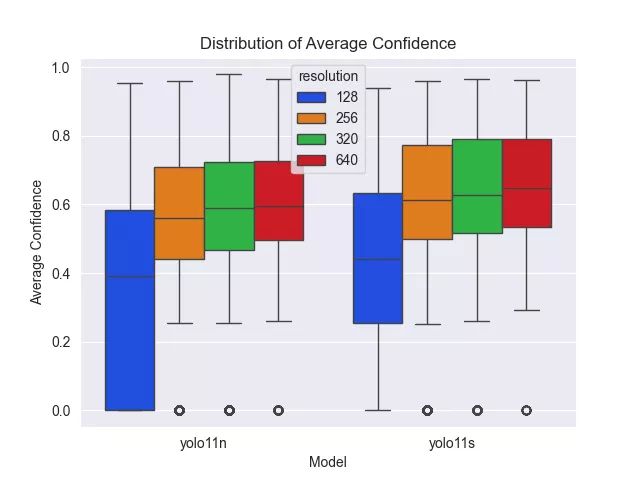
Förderjahr 2024 / Stipendium Call #19 / ProjektID: 7383 / Projekt: Dynamic Power Management for Edge AI: A Sustainable Self-Adaptive Approach
Last time, I introduced the setup of my experiment for measuring how model type, resolution and frame rate influence object detection performance on a RaspberryPi. Today, I’ll share results for two aspects: power consumption and prediction confidence
Power Consumption
The boxplots reveal clear trends. YOLO11s consistently consumes more power than YOLO11n under all conditions. Increasing the frame rate from low values sharply raises power usage, but the curve flattens between 15 and 30 FPS, suggesting diminishing returns in this range. Resolution also plays a role: moving from 128 to 256, and then to 320 pixels, increases power noticeably, but going from 320 to 640 pixels adds virtually nothing. The spread and skewness in the plots hint at non-uniform variability across settings, so a non-parametric approach was required for analysis.
The Kruskal–Wallis test confirmed that all three parameters - model type, frame rate, and resolution - have a statistically significant impact on power usage (p ≈ 0). Dunn’s post hoc tests pinpointed where those differences lie: almost all parameter pairs differ significantly, except between 320 and 640 pixels, and between 15 and 30 FPS, where changes are small.

Prediction Confidence
A second set of boxplots focuses on average prediction confidence. Here, resolution stands out as the main driver: at 128 pixels, confidence is much lower, while 256 and 320 pixels significantly boost results. Increasing to 640 pixels offers only a marginal, statistically insignificant improvement. Frame rate has less impact on confidence than on power usage, but the model choice matters - YOLO11s delivers consistently higher confidence than YOLO11n.
Statistical testing supports these findings. The Kruskal–Wallis test for resolution (H = 4686.605, p ≈ 0) showed a strong effect, with Dunn’s post hoc results confirming significant jumps from 128 → 256 and 256 → 320 pixels, but no difference between 320 and 640 pixels. The test for model type (H = 169.998, p = 7.41×10⁻³⁹) revealed a highly significant advantage for YOLO11s over YOLO11n, with the Dunn’s test p-value matching this extreme significance.

Putting It Together
The patterns for power consumption and prediction confidence align in a way that’s useful for tuning inference parameters. If you want to save energy without losing accuracy, resolutions beyond 320 pixels are unnecessary, and frame rates above 15 FPS provide minimal benefit for detection quality. Choosing YOLO11s over YOLO11n increases confidence, but comes at the cost of higher power usage - meaning the “best” choice depends on whether efficiency or accuracy is your priority.



